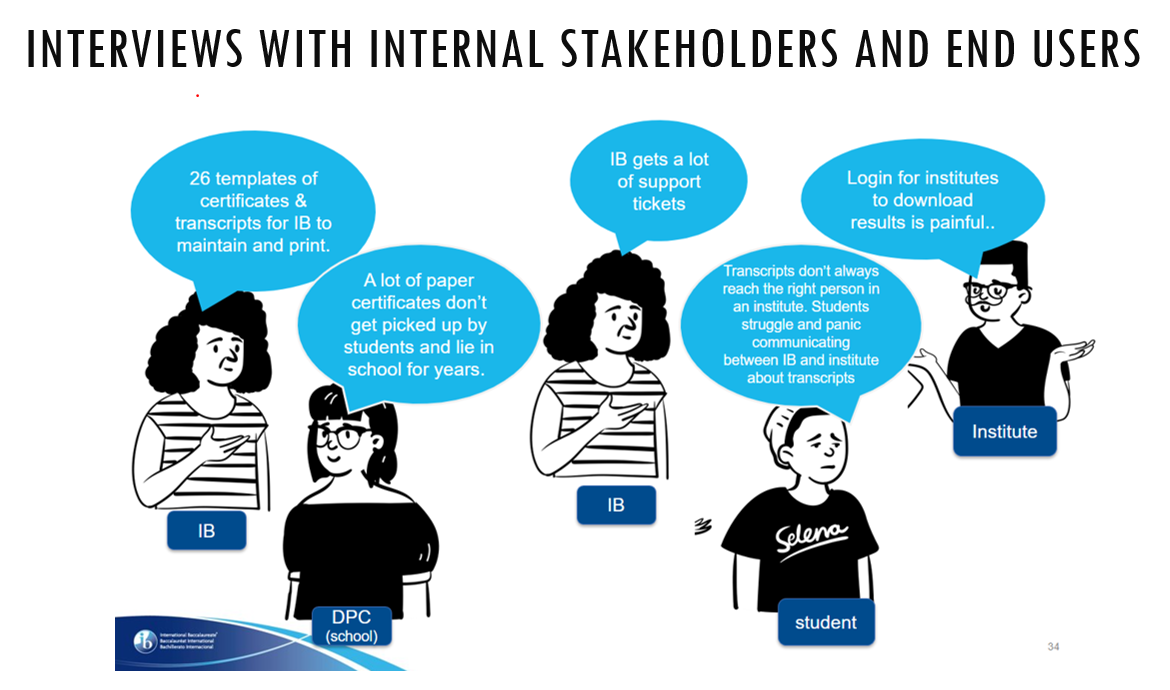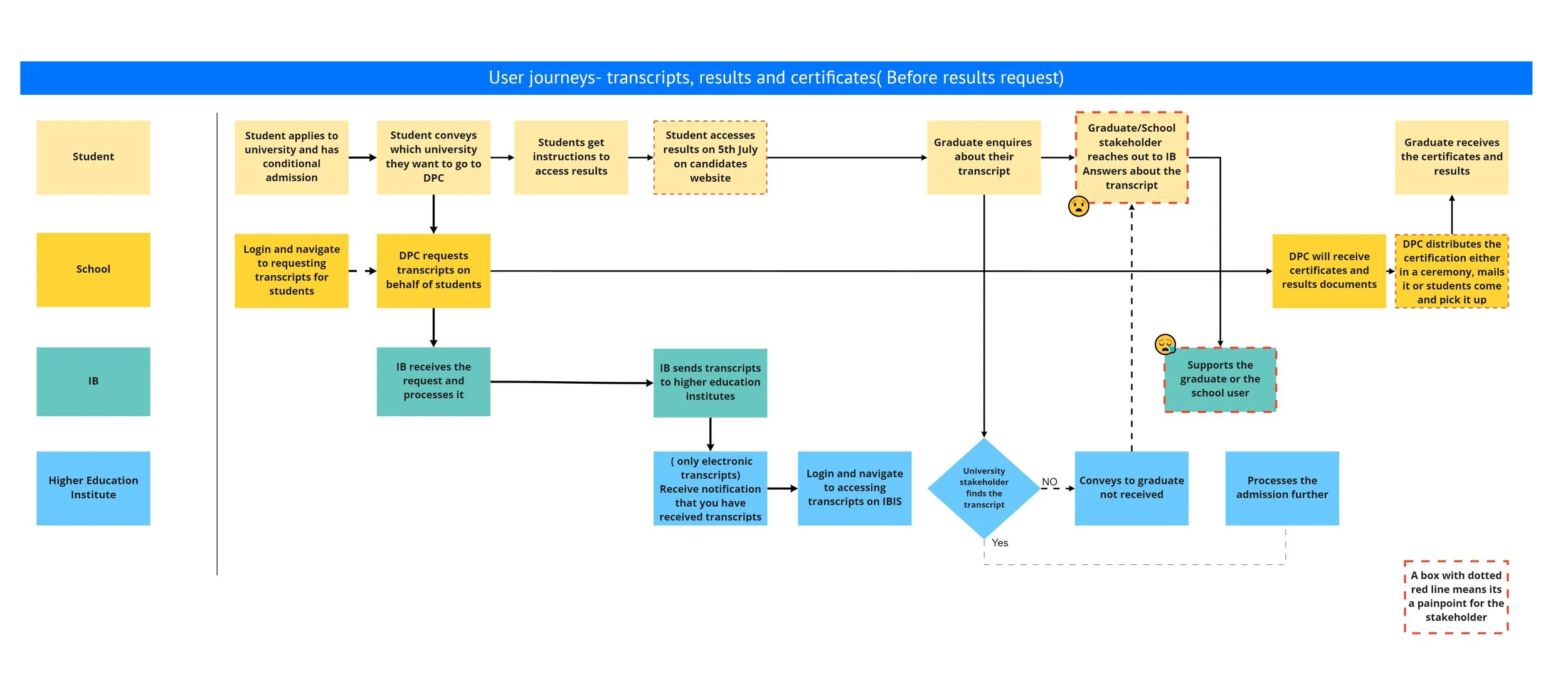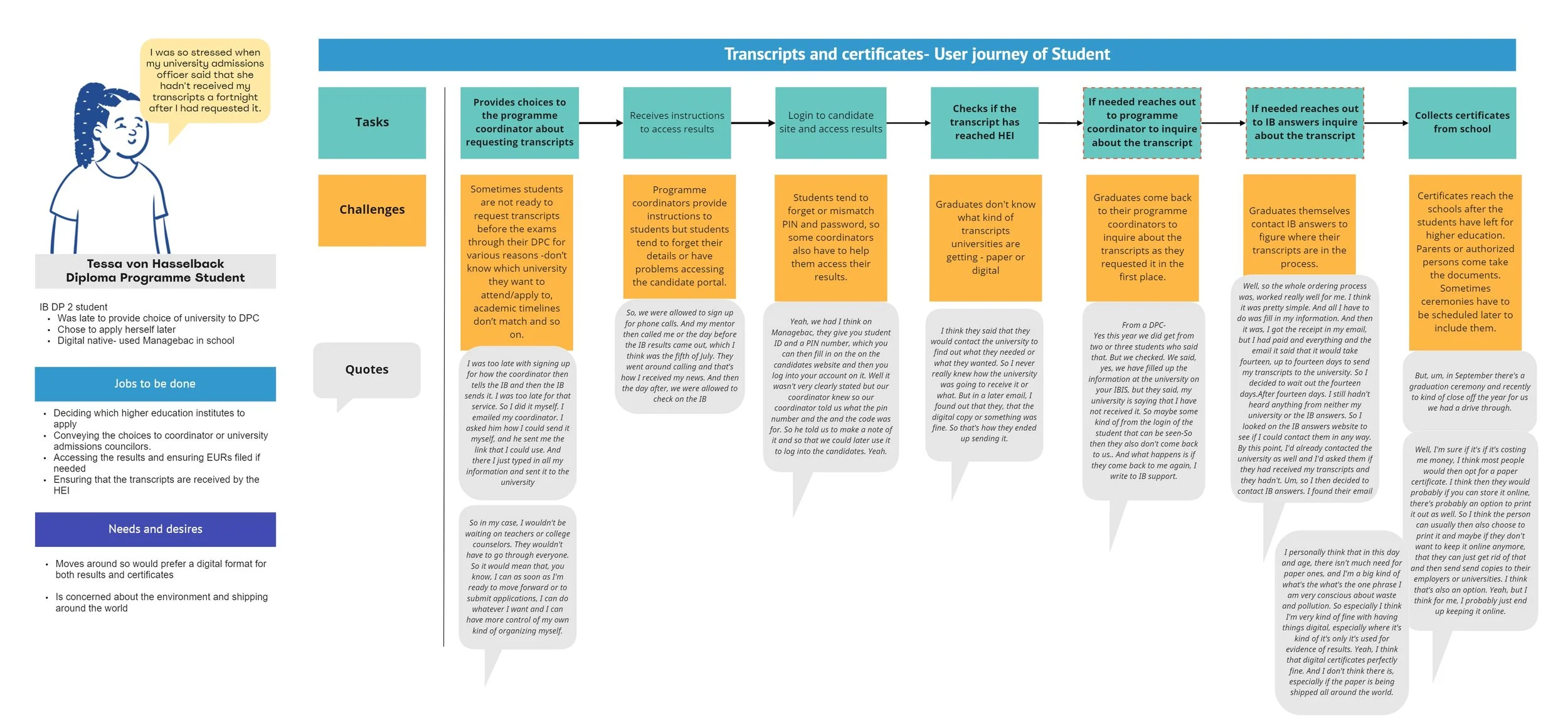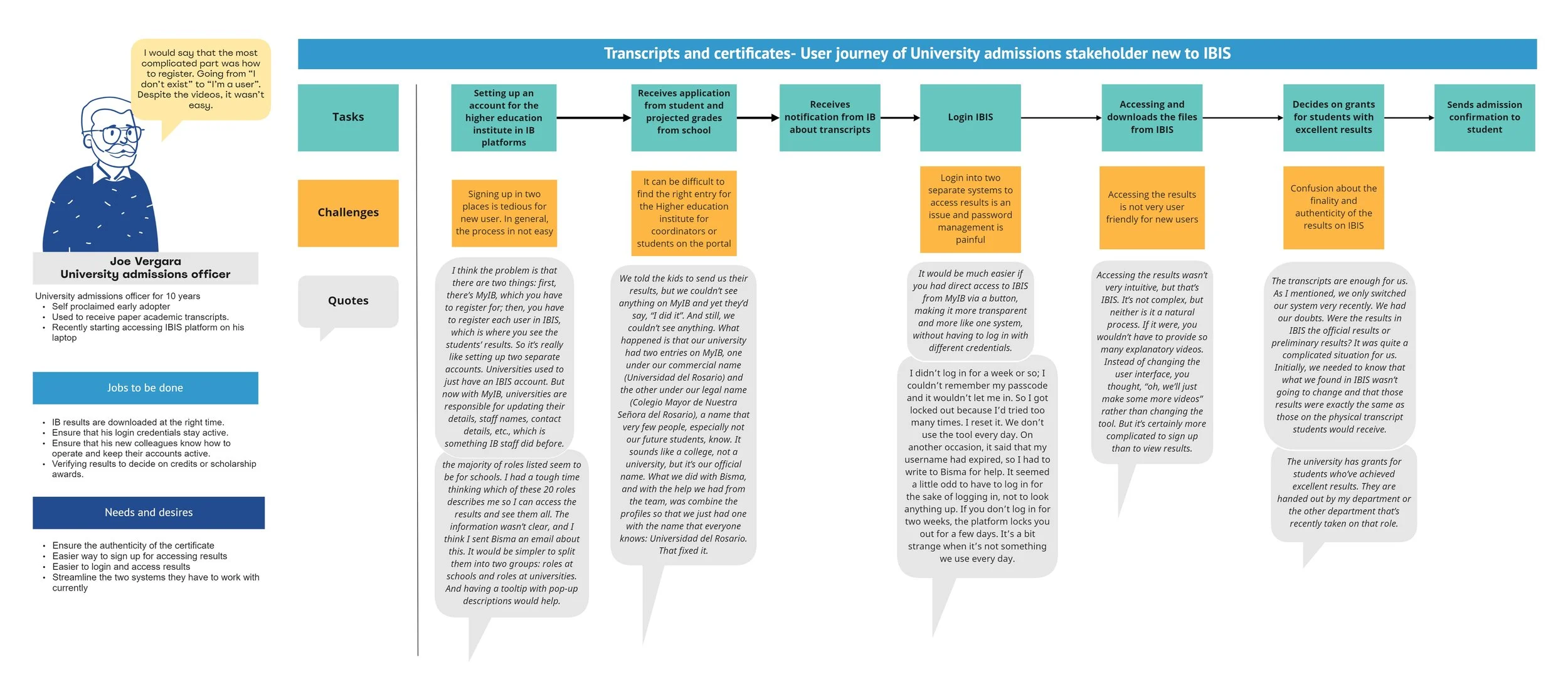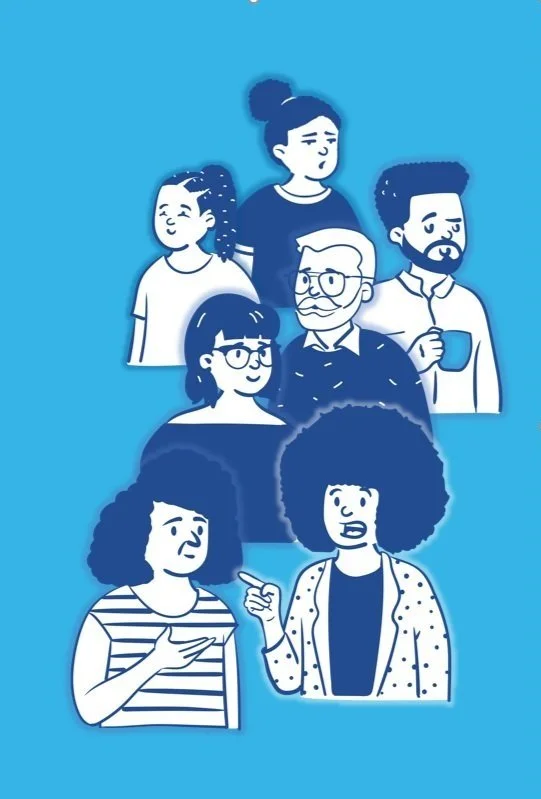
Exploring future of certification for International Baccalaureate
International Baccalaureate offers four educational programmes and awards certificates and diplomas to students when they complete or take courses. The IB certificates and transcripts production is currently manual, complex and paper-based. It is unsustainable, open to errors and has an inefficient service model. There are many templates and thousands of tickets logged by end users every year to solve transcript issues.
This project was an initiative to reimagine the future of transcripts and certificates and their facilitating processes and service ecosystem in the International Baccalaureate(IB).
Project Overview
Since no user research has ever been conducted in this context, it was a good opportunity to understand and empathize with the users. There was little clarity on current user behaviours, unmet needs and pain points. The IB team working with these processes are used to this service model and because of the global nature of the organization changing such a complex and complicated process is a big challenge.
The challenge was on two axes- one to understand user needs, innovate and drive innovation and change considering the established patterns and workarounds of users and stakeholders.
So, I planned and conducted user research with a variety of end users: students, alumni, schools and universities stakeholders.
Scope of research
The research objectives included a better understanding of how users used the current platforms, uncover gaps in our products, discover potential new opportunities and validate/disprove any assumptions and hypotheses held by different members of the organisation. These assumptions, biases and hypotheses were uncovered during initial brainstorming sessions.
Project Approach
My approach was to understand ‘what’ were the biggest problems in the user ecosystem as well as emergent issues and ‘why’ did they exist? Additionally, what were the implications of going ‘digital’? We needed numbers to back us up as a major business change would be informed on the basis of this research.
I decided upon and followed a mixed method approach:
Collection and analysis of historical data-this would provide some emerging patterns and trends for user behaviors, and complaints observed or logged so far.
Understanding the context of the user ecosystem-to explore and grasp the context of different internal and external stakeholders involved in or impacted by these processes, to understand the ‘why’, and collect qualitative data for actionable insights.
Validating the insights with a larger sample- to validate with a quantifiable number for business change.
Methodology
Secondary research
Surveys and Logs- Collected and analyzed IB answers log data and previous research surveys conducted on related topics by the IB in the recent past. I created hypotheses and research questions based on the pain points derived from quantitative data from customer logs.
Primary research
Workshops with IB team
I conducted an assumption mapping and perspective gathering workshop with internal team members. Value proposition design used as a model to structure this workshop to get in internal business team view and knowledge on the current process and pain points.
Qualitative interviews
1:1 remote semi-structured interviews with different stakeholders from IB ecosystem. These qualitative interviews were structured around the data collected from the earlier research activities.
Survey
Validation of insights derived from the interviews was done by conducting a quantitative survey with questions based on insights from the interviews.
The survey was sent out to all heads of school who shared the link with school stakeholders, students and school alumni.
Through this project, I also found that there was little awareness around the end-to-end user journeys- different stakeholders were involved in different scenarios. I analysed these journeys from the back-of-house (what IB does) and front-of-house (what the user is doing) and this also became a deliverable.
As a research lead, I was supported by the organisational survey specialist, business lead, assessment leadership team.
Insights sought
How does our school community, students and alumni, universities experience and use services around certificates, transcripts, and legalization?
1.What are their current processes around (certificates/transcripts/legalization)?
2.What works well?
3.What are the frustrations and pain points?
Research Process
Workshop with internal stakeholders
My first step was to pull in internal stakeholders who were involved in the transcripts and certification processes and had a large amount of knowledge around our user’s needs, tasks, personality traits, and pain points.
We conducted two online workshops to explore user needs from an inside- out view and outside-in view. We worked with the value proposition model. We talked to the stakeholders about three main themes:
What works well?
What doesn’t work well?
What could be better?
As this was a remote workshop, each person had to bring their perspective for each question and then put the post-its on the virtual wall. In the first workshop, we explored these questions from their or IB perspective and the second one we asked them to best guess from the user perspective.
Value proposition canvas from strategyzer.com
Outputs from both the workshops gave me directions around structuring the interview guide for qualitative interviews and what we might expect when interviewing the users. This also helped us understand the context of the internal stakeholders.
Interviews with Internal stakeholders and end users
Once we defined our main research question, I began the process of reaching out to users through our user database, following up for logged tickets and university connections.
I had several meetings with internal stakeholders to form a research plan to ensure everyone was on the same page and had the opportunity to get certain questions answered.
Since this was generative research, all the interviews were very open-ended and more of a conversation. I started with understanding roles and a typical day-in-the-life, what role did they play in the certificate and results process, and then asked them to walk me through how they typically used the platform.
Some observations from interviewees
User journeys
After analysis and synthesis of the data from qual interviews, I created composite journeys of different users with different scenarios that exist currently. This helps us understand which areas need to be addressed.
Composite user journeys to illustrate tasks of different actors in the journey and painpoints for the end users
Personas and user journeys
After analyses and synthesis personas and specific user journeys for the interviewed user groups were also created to create awareness in the project team.
Surveys
The survey was focused at two user groups- school staff; students and alumni. It was created in consultation with the IB survey team and vetted by relevant departments.
The surveys had questions pertaining to paper and digital certificates, results and transcripts in order to validate some of our previous findings and to explore the appetite for digital credentials.
We also got back data from the survey that helped us with validating and moving ahead with some of our findings from the qual phase.
The outcome pointed to a hybrid model- paper as well as digital for the future.
Recommendations
After analysis and synthesis of the all research data, my recommendations for future steps were in the form of HMW statements showing the most important needs of the important users.
How can we guide the user(schools/graduates) with relevant and current information about universities when requesting transcripts?
How might eliminate the waste due to unclaimed IB graduate certificates stored at schools?
How might we ensure access of the transcripts for the higher education institutes is less time-consuming and simple?
How can we make it easy for students to access their results?
How might we reduce the stress and panic of the graduates during the request and transmission of transcripts ?
Reflections
Challenges
Since everyone is working online, people have zoom fatigue.
Working in a remote situation, especially with team members and end users spread out throughout the world. Finding time in schedules, around school and university academic calendars, I tried my best to be flexible with scheduling the interviews.
Getting internal stakeholders to align on survey design; everyone weighed in and had different ideas about the questions.
I worked with the business lead to tie the strings and prioritise and sharpen the survey questions.
Making the research accessible and applicable to many different roles.
I made it a point to inform the team and relevant stakeholders about user research progress at the regular meetings.
Lessons learnt
Online workshops are much better with two facilitators.
Establishing what we want to take away from it and practicing beforehand with timeboxing always helps for a better flow and ensures you get to everything you need. Always be ready to improvise if people are offering rich information.
Always have a parking lot for extra and less relevant ideas.
And dont discard any ideas at the beginning.
Image credits- openpeeps
Impact
Informed the business case and guided the decision-making.
Informed the Request for proposals and prioritizing what needs to be built or bought (OOTB solution).
Would lead to a savings of 140k USD in call costs on implementation.




